Headlines
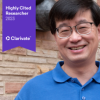 In a prestigious acknowledgment of scientific impact, JILA and NIST Fellow Jun Ye has been awarded the 2023 "Highly Cited" researcher designation from Clarivate. This notable recognition is bestowed upon researchers whose work ranks in the top 1% of citations for their field.
In a prestigious acknowledgment of scientific impact, JILA and NIST Fellow Jun Ye has been awarded the 2023 "Highly Cited" researcher designation from Clarivate. This notable recognition is bestowed upon researchers whose work ranks in the top 1% of citations for their field.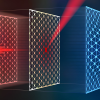 When measuring minor quantity changes, physicists use micro-mechanical resonators that resonate at specific frequencies. New research from Cindy Regal (JILA, Physics) and her team has found that temperature fluctuations in various parts of the resonators can lead to unexpected behaviors.
When measuring minor quantity changes, physicists use micro-mechanical resonators that resonate at specific frequencies. New research from Cindy Regal (JILA, Physics) and her team has found that temperature fluctuations in various parts of the resonators can lead to unexpected behaviors.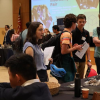 Over 250 students attended the second annual Physics and Quantum Career & Internship Fair in October. Held in partnership with JILA and CUbit, and sponsored by IonQ, the event drew more than 25 employers from industry, national labs and government agencies.
Over 250 students attended the second annual Physics and Quantum Career & Internship Fair in October. Held in partnership with JILA and CUbit, and sponsored by IonQ, the event drew more than 25 employers from industry, national labs and government agencies.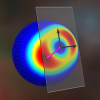 JILA Fellow Murray Holland and his research team have proposed an algorithm that uses the Quantum Fisher Information Matrix (QFIM), a set of mathematical values that can determine the usefulness of entangled states in a complicated system. Their results were recently published in Physical Review Letters.
JILA Fellow Murray Holland and his research team have proposed an algorithm that uses the Quantum Fisher Information Matrix (QFIM), a set of mathematical values that can determine the usefulness of entangled states in a complicated system. Their results were recently published in Physical Review Letters. CU Boulder researchers attracted a record $684 million in research funding—a 4% increase over the prior year—for studies that, among other things, elevate quantum science in Colorado, solve mysteries about the sun, and provide even better data on sea ice, ice sheets, glaciers and more.
CU Boulder researchers attracted a record $684 million in research funding—a 4% increase over the prior year—for studies that, among other things, elevate quantum science in Colorado, solve mysteries about the sun, and provide even better data on sea ice, ice sheets, glaciers and more. With the help of a recent NSF grant, Professor Scott Diddams is collaborating with physicists from NIST and NOAA to advance geodesy—the study of accurately measuring Earth’s geometric shape, orientation in space and gravity field—through the use of quantum sensors.
With the help of a recent NSF grant, Professor Scott Diddams is collaborating with physicists from NIST and NOAA to advance geodesy—the study of accurately measuring Earth’s geometric shape, orientation in space and gravity field—through the use of quantum sensors.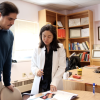 In this video, Ana Maria Rey (Physics, JILA, NIST) discusses how her team at Q-SEnSE (an NSF Quantum Leap Challenge Institute led by CU Boulder) is working to harness the unique capabilities of the quantum world to develop sensors “we would have never imagined we could build.”
In this video, Ana Maria Rey (Physics, JILA, NIST) discusses how her team at Q-SEnSE (an NSF Quantum Leap Challenge Institute led by CU Boulder) is working to harness the unique capabilities of the quantum world to develop sensors “we would have never imagined we could build.”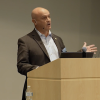 At the annual presentation, Vice Chancellor for Research and Innovation and Dean of the Institutes Massimo Ruzzene outlined key activities, insights and aspirations from the university’s research and innovation enterprise, including CU Boulder’s CUbit Quantum Initiative.
At the annual presentation, Vice Chancellor for Research and Innovation and Dean of the Institutes Massimo Ruzzene outlined key activities, insights and aspirations from the university’s research and innovation enterprise, including CU Boulder’s CUbit Quantum Initiative.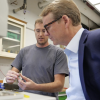 On Oct. 20, while touring JILA and various labs, Bennet celebrated an announcement by Gov. Jared Polis that the U.S. Department of Commerce had designated Colorado’s Elevate Quantum consortium a Regional Technology Hub for Quantum Information Technology (QIT).
On Oct. 20, while touring JILA and various labs, Bennet celebrated an announcement by Gov. Jared Polis that the U.S. Department of Commerce had designated Colorado’s Elevate Quantum consortium a Regional Technology Hub for Quantum Information Technology (QIT). As executive director, Sternberg will work with CUbit leadership to set the strategic direction of the initiative, coordinate with CUbit researchers to pursue and capture large-scale research opportunities, and broadly support the translation of quantum research to operations through networks of industry partners.
As executive director, Sternberg will work with CUbit leadership to set the strategic direction of the initiative, coordinate with CUbit researchers to pursue and capture large-scale research opportunities, and broadly support the translation of quantum research to operations through networks of industry partners.

